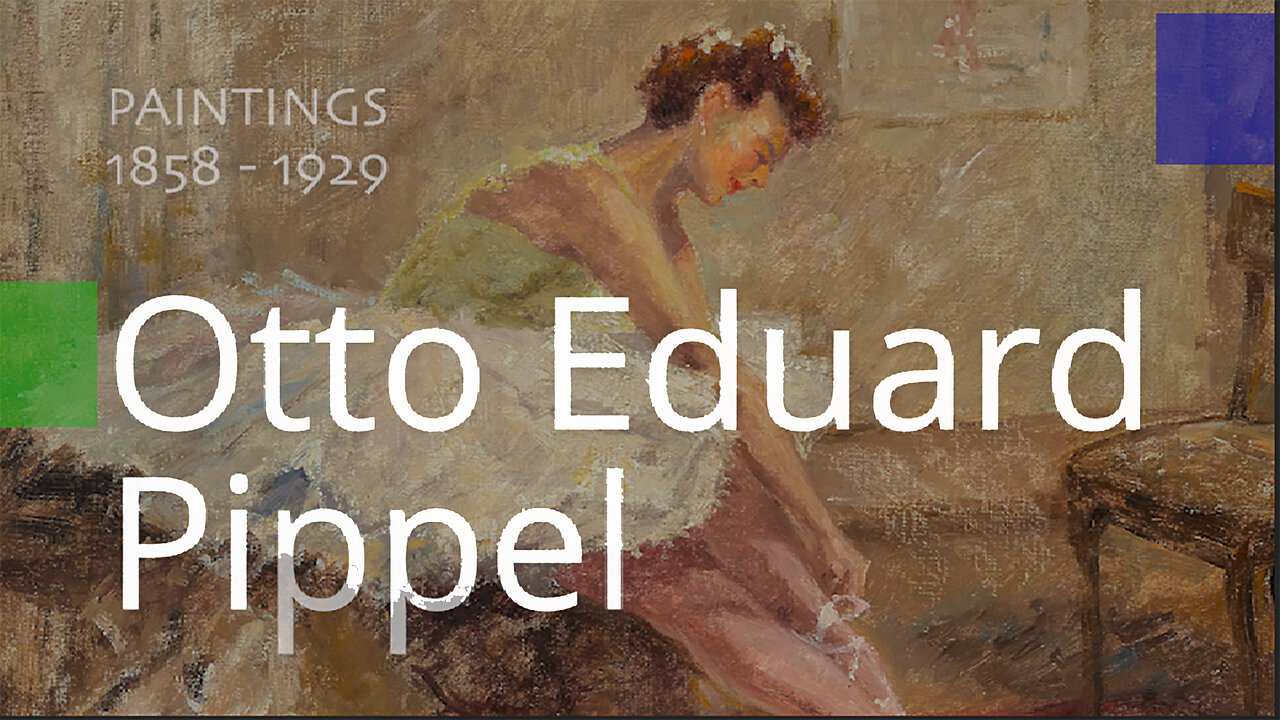Premium Only Content

Otto Eduard Pippel - Paintings (1878 - 1960)
Born: 1878 - Lodz, Poland
Died: 1960 - Munich, Germany
Otto Pippel was one of the most important Impressionists in Southern Germany. As the son of German parents who had emigrated to Lodz, Pippel enrolled at the School of Applied Arts in Straßburg in 1896 with the express wish to become an interior decorator and a decorative painter.
He had to interrupt his studies shortly afterwards, however, as he was drafted into the Russian army for four years. He continued his studies in 1905 in Karlsruhe under Friedrich Fehr and Julius Hugo Bergmann and in 1907 at the Dresden Akademie under Gotthard Kuehl. Pippel travelled to the Crimea in the following year and decided to settle in Planegg near Munich in 1909. In the same year, he travelled to Paris, where the French Impressionists encouraged him to develop images of light and impressions.
Pippel joined the ‘Luitpoldgruppe’ in 1912 and exhibited his first work, a small winter landscape, at the Munich Glaspalast. He had regular exhibitions at the Galerie Brakl in Munich since 1915. At the outbreak of the First World War he was drafted, but was able to spend the war as an interpreter in a prisoner-of-war camp near Lechfeld because of his command of Polish and Russian. After the war, Pippel returned to his house in Planegg, where he spent the rest of his life, creating an extensive oeuvre.
As a master of colour Pippel painted wonderful landscapes, still-lifes and vedutas, but he also mastered figure painting in a perfect Impressionist style. Among his best known works are, above all, the Munich motifs, such as the Hofgarten, the Englischer Garten and the Hirschgarten. Otto Pippels works can today be seen in the Städtische Galerie im Lenbachhaus (‘Das Undosabad in Starnberg’ and ‘Großstadtstraße’) as well as in the Städtische Galerie Rosenheim (‘Am chinesischen Turm’, ‘Sommer’ and ‘Kammermusik’)
Following his study in the School of Applied Arts in Strasbourg, Karlsruhe and the Dresden Academy, Otto Pippel entered the public eye in 1912 with his first exhibition in the Munich Glaspalast. The subject of his first exhibition piece was a winter landscape. Four years earlier, during a trip to France, Pippel was exposed to Impressionist handling of paint. Influenced by this, Pippel would adhere to an Impressionist manner when rendering to his own depictions of people, landscapes and interiors, gaining him a reputation as one of the leading figures of the South German Impressionist movement.
The present painting is a return to the artist’s early inspiration, a winter landscape. The light glints on the snow, while the soft glow of the rising sun reflecting off the mountains brings warmth to the palette and the landscape itself. Zugspitze, the highest mountain peak in the artist’s native Germany, dominates the composition. Pippel uses a row of trees to bring distance between the viewer and the mountain, accentuating the majesty of Zugspitze.
-
 1:09:07
1:09:07
Donald Trump Jr.
16 hours agoBreaking News on Latest Cabinet Picks, Plus Behind the Scenes at SpaceX & Darren Beattie Joins | TRIGGERED Ep.193
208K718 -
 1:42:43
1:42:43
Roseanne Barr
12 hours ago $62.84 earnedGod Won, F*ck You | The Roseanne Barr Podcast #75
92.5K195 -
 2:08:38
2:08:38
Slightly Offensive
13 hours ago $40.22 earnedDEEP STATE WINS?! Matt Gaetz OUSTED as AG & Russia ESCALATES War | Guest: The Lectern Guy
90.3K56 -
 1:47:36
1:47:36
Precision Rifle Network
13 hours agoS3E8 Guns & Grub - the craziness continues
67.8K4 -
 41:37
41:37
Kimberly Guilfoyle
14 hours agoPresident Trump Making all the Right Moves,Live with Border Union Chief Paul Perez & Lawyer Steve Baric | Ep. 176
155K45 -
 19:38
19:38
Neil McCoy-Ward
17 hours agoMASS LAYOFFS Have Started... (How To Protect Your Income)
58.8K9 -
 46:21
46:21
PMG
1 day ago $7.40 earned"Venezuelan Gang in 16 States, Animal Testing Crackdown, & Trump’s Nominee Battle"
43K11 -
 4:54:08
4:54:08
VOPUSARADIO
16 hours agoPOLITI-SHOCK! WW3!?, BREAKDOWN OF THE WORLD EVENTS & R.A.G.E. (What it means & What's next!)
33.6K6 -
 1:00:10
1:00:10
The StoneZONE with Roger Stone
13 hours agoWhy Democrats Hold Poor Children Hostage in Failing Schools | The StoneZONE w/ Roger Stone
60.7K7 -
 4:42:29
4:42:29
Tundra Gaming Live
13 hours ago $2.19 earnedThe Worlds Okayest War Thunder Stream//Air Force Vet Flys Jets
36.2K